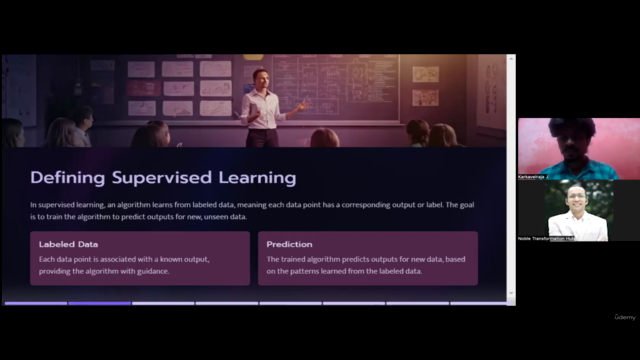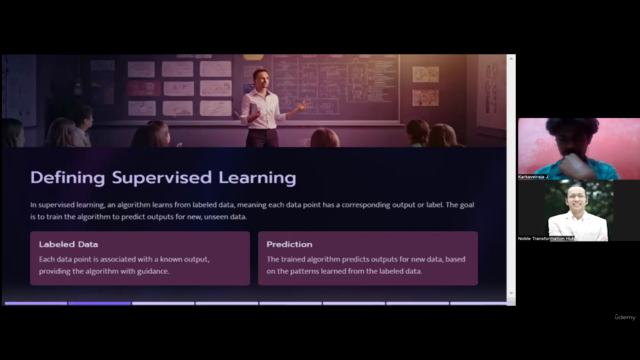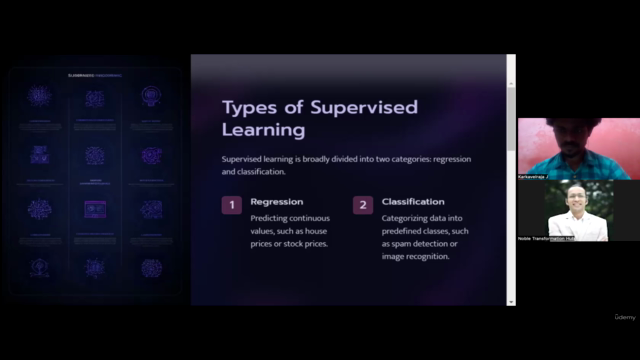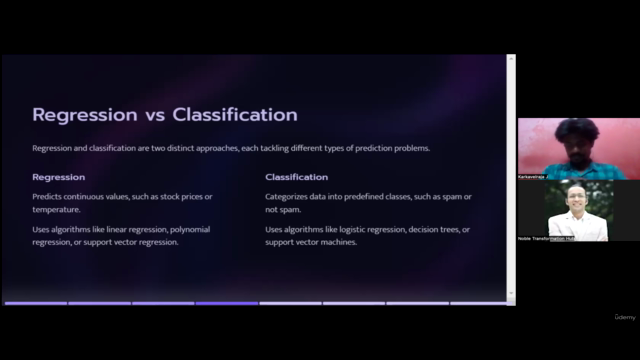Mastery in Advanced Machine Learning & Applied AI™

Why take this course?
Based on the comprehensive list you've provided, this course outline seems to be designed as a curriculum for mastering machine learning, data mining, and unsupervised learning techniques. Here's a breakdown of the topics covered and some insights into how you might structure this course or study plan:
1-7: Introduction to Machine Learning
- Basics of machine learning and AI
- Overview of different types of machine learning: supervised, unsupervised, reinforcement, etc.
- Introduction to various algorithms like decision trees, SVMs, and neural networks.
8-16: Supervised Learning Algorithms
- Detailed study of classification and regression techniques, including logistic regression, random forests, and support vector machines (SVM).
- Evaluation metrics (accuracy, precision, recall, ROC curves, etc.).
17-26: Model Evaluation Techniques
- Cross-validation, grid search, and other model tuning methods.
- Performance evaluation on different datasets.
27-34: Feature Engineering & Selection
- Techniques to create new features or select the most informative ones for building models.
- Understanding feature importance.
35-40: Ensemble Methods
- Exploration of ensemble techniques like bagging, boosting (AdaBoost, Gradient Boosting), and stacking.
- Deep learning applications in feature learning and model enhancement.
41-42: Hyperparameter Tuning
- Advanced methods for tuning hyperparameters including random search and Bayesian optimization.
43-50: Unsupervised Learning
- K-means clustering, hierarchical clustering, and DBSCAN as clustering algorithms.
- Dimensionality reduction techniques like PCA, LDA, and t-SNE.
- Evaluation metrics specific to unsupervised learning (silhouette score, etc.).
- Application of clustering in customer segmentation or anomaly detection.
51-52: Association Rule Mining
- Introduction to association rule mining and its application beyond market basket analysis (e.g., bioinformatics, web search patterns).
- Study of metrics like confidence and support to evaluate rules.
- The Apriori algorithm and its role in finding frequent itemsets or association rules.
53-56: Market Basket Analysis
- Practical applications of association rule mining using market basket data.
- The complete workflow from dataset preprocessing to generating valuable insights.
Throughout this course or study plan, students would apply machine learning algorithms using real datasets and coding exercises in Python or R, which are the primary programming languages used in AI and ML research and applications. They would also learn to interpret results, understand the theoretical underpinnings of algorithms, and gain practical experience through hands-on projects.
To complete this course effectively, students should have a solid foundation in statistics, linear algebra, and programming. They should also be prepared to engage with complex mathematical concepts, algorithmic nuances, and real-world data analysis challenges. The course ends with a capstone project or a series of practical assignments that synthesize the skills and knowledge acquired throughout the curriculum.
Course Gallery




Loading charts...